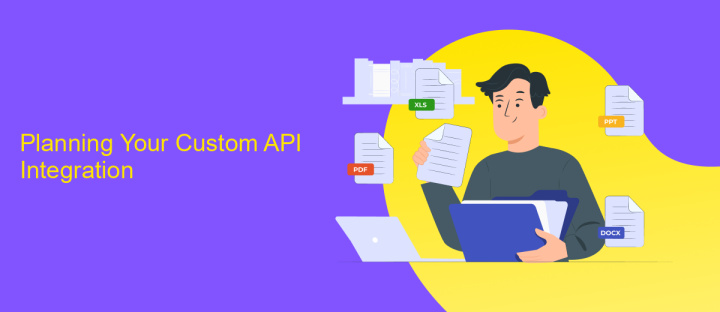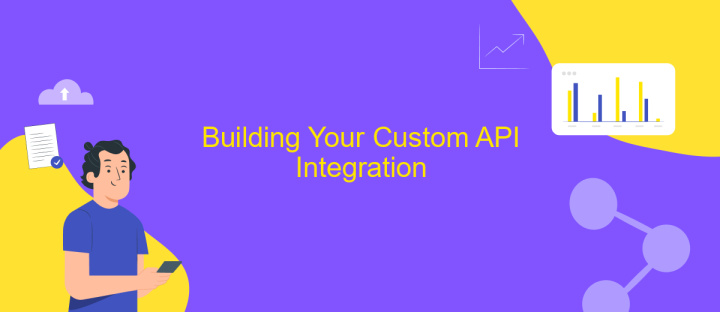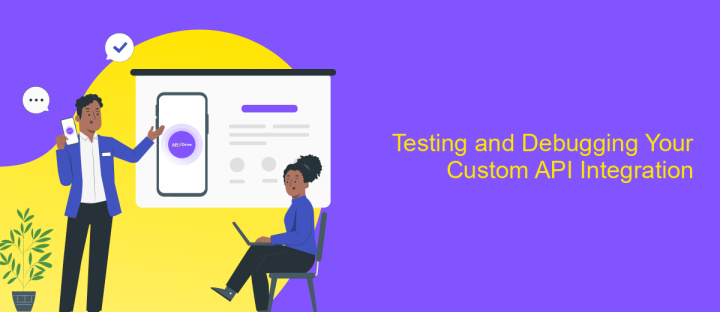Custom API Integration
In today's digital landscape, custom API integration has become a critical component for businesses seeking to enhance functionality and streamline operations. By enabling diverse software systems to communicate seamlessly, custom APIs allow organizations to tailor solutions to their specific needs, improve data exchange, and foster innovation. This article explores the benefits and best practices of custom API integration, providing insights into how it can drive efficiency and support business growth.
Understanding Custom API Integrations
Custom API integrations are essential for businesses seeking to enhance functionality and streamline operations. By connecting different software applications, custom APIs allow for seamless data exchange and improved workflow efficiency. Understanding the intricacies of these integrations is crucial for leveraging their full potential. This involves recognizing the specific needs of your business and how a custom API can address them.
- Identify the systems and applications that need integration.
- Determine the data exchange requirements between these systems.
- Choose the right API protocols and standards for your needs.
- Ensure data security and compliance with industry standards.
- Plan for future scalability and integration flexibility.
Successful custom API integration requires careful planning and execution. It involves not only technical expertise but also a clear understanding of business objectives. By focusing on these aspects, organizations can create robust integrations that enhance productivity and provide a competitive edge. Moreover, ongoing monitoring and maintenance are vital to ensure the integration continues to meet evolving business needs and technological advancements.
Planning Your Custom API Integration

When planning your custom API integration, it's crucial to start by clearly defining your objectives and requirements. Identify the specific functions you need from the API and how they align with your business goals. Understanding the data flow and the type of data you will exchange is essential for a seamless integration. Additionally, consider the technical capabilities of your team and whether you need external expertise to assist with the development process. This initial planning phase ensures that you have a solid foundation before diving into the technical aspects.
Once your objectives are clear, explore tools and services that can facilitate the integration process. Platforms like ApiX-Drive offer user-friendly solutions that simplify the connection between applications without extensive coding knowledge. These services can save time and reduce the complexity involved in custom API integrations. Evaluate the features and pricing of such tools to determine the best fit for your needs. By leveraging these resources, you can streamline the integration process, ensuring that your systems communicate efficiently and effectively.
Building Your Custom API Integration

Creating a custom API integration can significantly enhance your application's functionality by allowing it to communicate seamlessly with other software systems. The process involves several key steps that ensure a smooth and efficient integration. Understanding these steps can help you build a robust integration that meets your specific needs.
- Identify the API requirements: Determine what data or functionality you need from the API and how it will benefit your application.
- Access API documentation: Review the API's documentation to understand its capabilities, endpoints, authentication methods, and data formats.
- Set up authentication: Implement the necessary authentication protocols, such as OAuth or API keys, to securely access the API.
- Develop the integration: Write code to send requests to the API and handle responses, ensuring data is correctly processed and stored.
- Test the integration: Conduct thorough testing to verify that the integration works as expected and handles errors gracefully.
Once your custom API integration is built, it's crucial to maintain it by keeping up with any updates or changes in the API. Regular monitoring and testing will help ensure that the integration remains reliable and continues to provide value to your application.
Testing and Debugging Your Custom API Integration

Testing and debugging your custom API integration is crucial to ensure its reliability and performance. Start by setting up a test environment that mirrors your production setup. This allows you to safely experiment and identify potential issues without affecting live data or users. Utilize API documentation to understand expected responses and error codes, which will guide your testing process.
Begin with unit testing to validate individual components of your integration. This helps in isolating and fixing issues at the micro level before they escalate. Once unit tests pass, proceed to integration testing to ensure that different components interact correctly. Pay special attention to edge cases and error handling, as these are common sources of bugs.
- Use logging extensively to track API requests and responses.
- Implement automated tests to streamline the testing process.
- Leverage API testing tools like Postman or Insomnia for manual testing.
- Monitor API performance and response times.
Debugging involves analyzing logs and error messages to pinpoint issues. Use breakpoints and debuggers in your development environment to step through code and inspect variables. Collaboration with your development team can also provide fresh perspectives and solutions. Regularly updating your API and staying informed about changes will help maintain a robust integration.


Deploying and Maintaining Your Custom API Integration
Deploying your custom API integration involves several critical steps to ensure a smooth transition from development to production. Begin by thoroughly testing your API in a controlled environment to identify and rectify any potential issues. This ensures the integration functions as expected under various conditions. Once testing is complete, carefully plan the deployment process, including scheduling downtime if necessary, to minimize disruption to users. Utilize automation tools to streamline the deployment, ensuring consistency and reducing the risk of human error. ApiX-Drive can be an invaluable resource during this phase, offering seamless integration solutions and reducing the complexity of the deployment process.
Maintaining your custom API integration requires ongoing monitoring and updates. Regularly check the performance and security of your API to address any vulnerabilities or inefficiencies. Implement logging and alerting systems to quickly identify and resolve issues as they arise. Additionally, stay informed about changes in the APIs you are integrating with, as updates or deprecations can impact your integration. ApiX-Drive offers tools to simplify maintenance tasks, allowing you to focus on optimizing and expanding your integration capabilities. By prioritizing maintenance, you ensure a robust and reliable API integration that meets evolving business needs.
FAQ
What is Custom API Integration?
How do I know if my business needs Custom API Integration?
What are the steps involved in setting up a Custom API Integration?
Can I set up a Custom API Integration without a technical background?
What are some challenges I might face with Custom API Integration?
Apix-Drive will help optimize business processes, save you from a lot of routine tasks and unnecessary costs for automation, attracting additional specialists. Try setting up a free test connection with ApiX-Drive and see for yourself. Now you have to think about where to invest the freed time and money!

